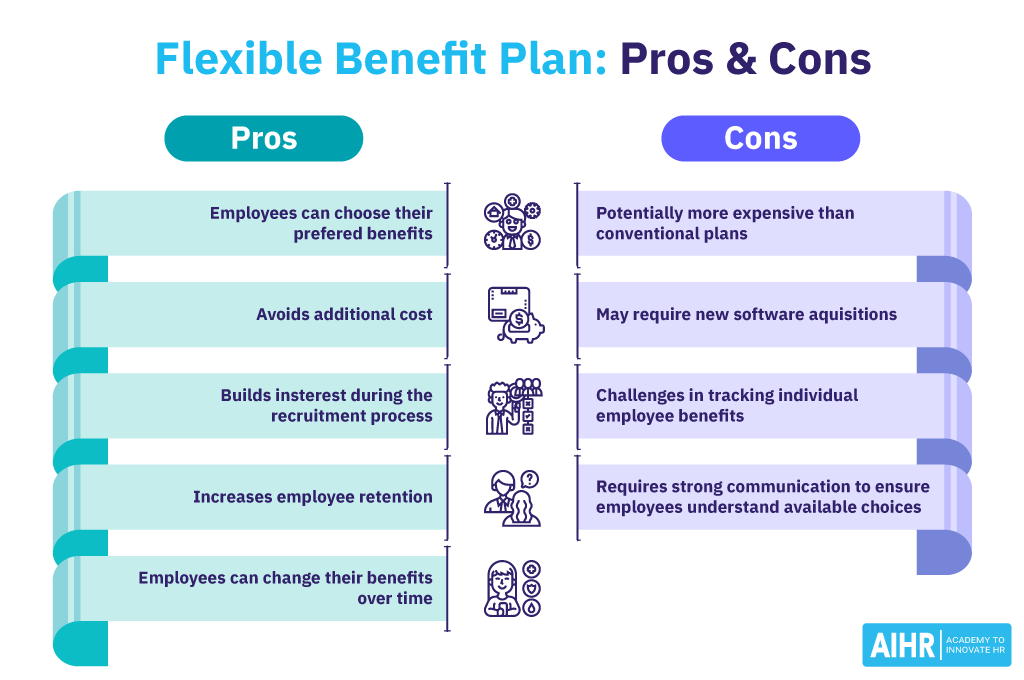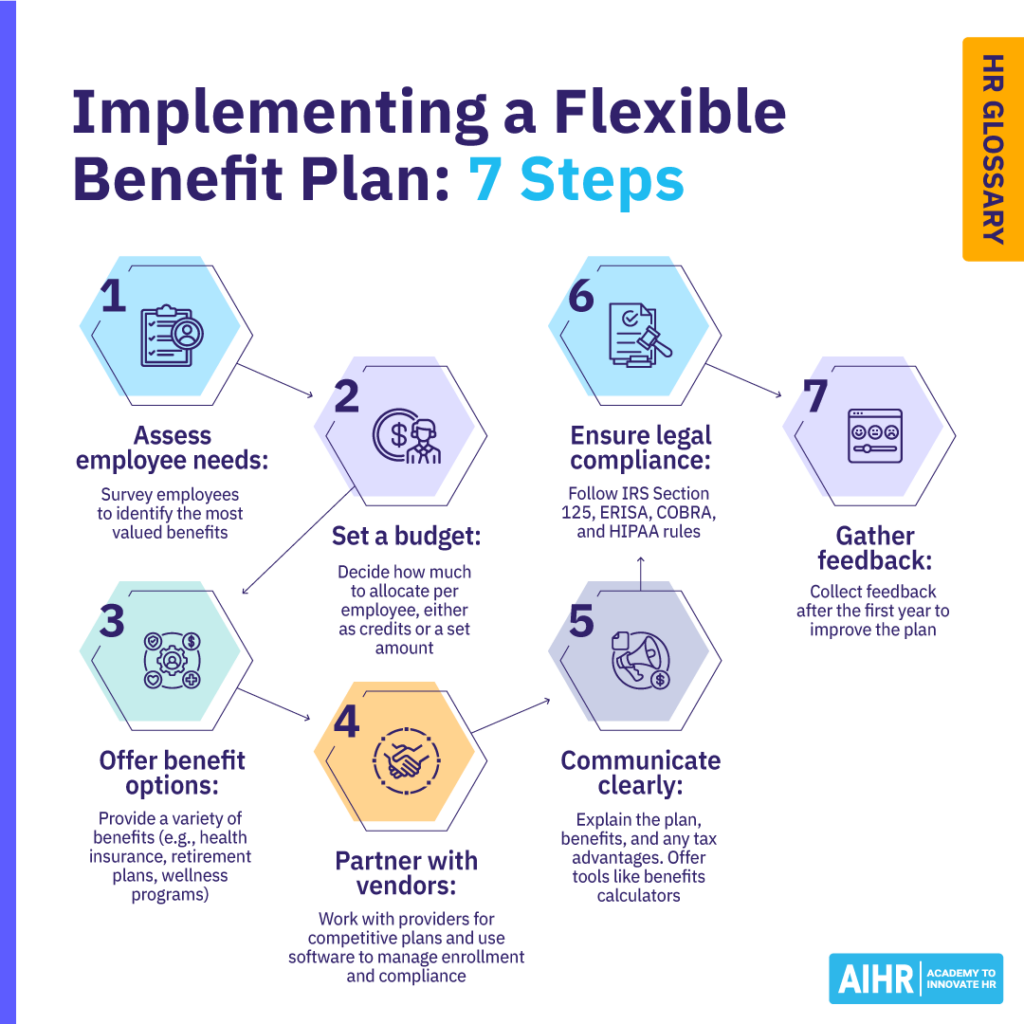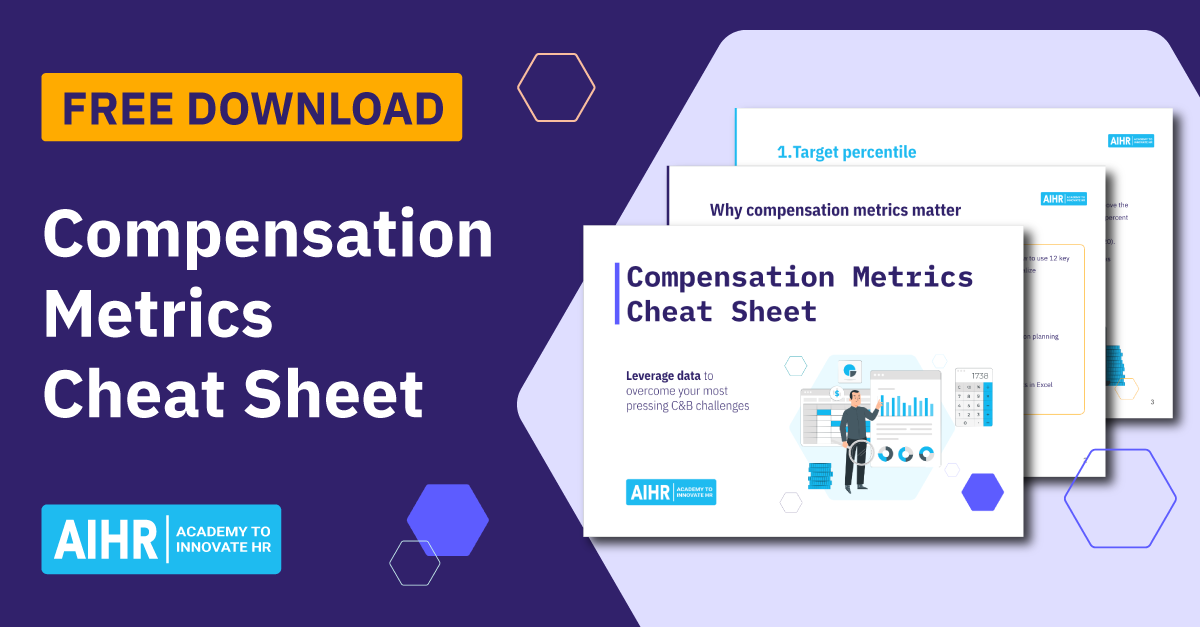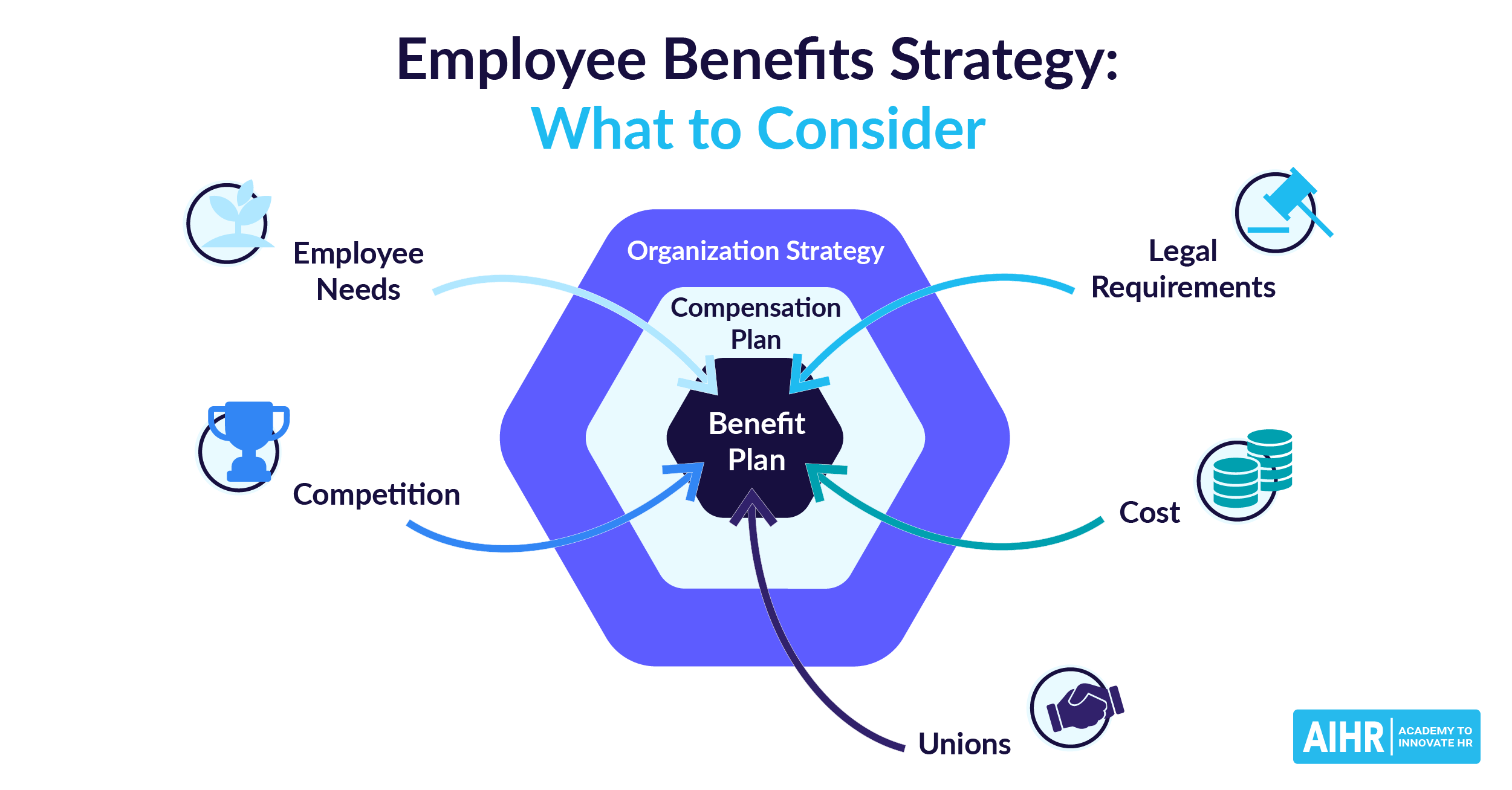Flexible Benefit Plan
What is a flexible benefit plan?
A flexible benefit plan (FBP), also known as a Section 125 plan or cafeteria plan, is an employee benefits program that allows workers to select from a variety of pre-tax benefit options. Employees can customize their benefits package by choosing the options that best meet their personal needs, such as health insurance, retirement plans, or flexible spending accounts (FSAs) while enjoying potential tax savings on eligible expenses.
Flexible benefits plan examples
Here are some examples of options typically offered under an FBP:
- Health insurance: Employees can choose between different health plans (e.g., high-deductible, PPO, or HMO plans) and may also decide how much coverage to opt for based on their needs.
- Dental and vision insurance: Employees can opt for coverage for dental care, orthodontics, or vision services like eye exams and prescription glasses.
- Life insurance: Employers often offer optional life insurance coverage, including basic, supplemental, or dependent life insurance.
- Flexible spending accounts (FSA): Employees can contribute pre-tax dollars to a health FSA to cover out-of-pocket medical expenses or a dependent care FSA for childcare costs.
- Health savings accounts (HSA): For employees with high-deductible health plans, HSAs allow pre-tax savings to cover qualified medical expenses, with the added benefit of funds rolling over year-to-year.
- Retirement plans: These include options to allocate employer-provided funds toward retirement savings, such as a 401(k), with potential employer-matching contributions.
- Disability insurance: Employees can opt into short-term or long-term disability coverage to protect their income in case of illness or injury.
- Paid time off (PTO): Some plans allow employees to buy or sell vacation days or take additional unpaid leave.
- Dependent care assistance: Employees can choose to set aside pre-tax income to cover childcare or eldercare expenses.
- Wellness programs: Benefits such as gym memberships, wellness coaching, or smoking cessation programs may be included.
Design flexible benefit plans to attract and retain top talent
Knowing how to create FBPs to attract top talent while also aligning them with your company’s budget and mission is a crucial skill for HR professionals.
AIHR’s Compensation & Benefits Certificate Program teaches you how to create adaptable benefit plans that can meet the unique needs of your workforce.
With a focus on compliance and strategy, this program helps you build FBPs that not only meet legal requirements but also drive employee satisfaction and engagement.
How does a flexible benefit plan work?
Flexible benefit plans work by providing employees with a set amount of “benefit credits” or a predetermined budget to spend on various benefits. Employees can then select from a menu of options based on their personal needs and preferences. Here’s a breakdown of how they typically operate:
- Employer allocates credits or budget: The employer sets a certain amount of credits or funds for each employee to use on benefits.
- Menu of benefits: Employees are presented with a list of available benefits, which can include health insurance, dental and vision coverage, retirement plans, life insurance, flexible spending accounts, and more.
- Customization: Employees choose how to allocate their credits, selecting the benefits that best meet their individual needs. They can often mix and match options based on personal circumstances and preferences.
- Pre-tax contributions: Many flexible benefit plans allow employees to pay for certain benefits, like health insurance or flexible spending accounts, using pre-tax dollars, which can reduce taxable income.
- Enrollment period: Employees typically make their selections during an open enrollment period, and those choices usually apply for the upcoming year unless there’s a qualifying life event (like marriage or the birth of a child) that allows them to make changes.
In essence, these plans give employees more control over their benefits while often providing tax advantages.

Advantages of a flexible benefit plan
Trying to create a one-size-fits-all traditional benefits package may be somewhat helpful for the majority of your employees, but incorporating flexibility for personalization is a better way to meet individual employee needs.
A flexible benefit plan can be a great way to ensure your employees can access the necessary benefits. It also can reduce the time and money your business spends on benefits that are never used. Some of the most common advantages of choosing a flexible benefits plan include:
- Giving employees the freedom to primarily choose the best benefits for themselves
- Helping your business save money by providing benefits employees want to and will use
- Building interest in your company during the recruitment process, which can attract talented individuals
- Increasing employee retention by understanding what employees want in a benefits package and catering to their needs
- Giving employees the flexibility to change their benefits over time as their personal and family needs shift.
Disadvantages of a flexible benefit plan
While many employers and employees find an FBP to be a great fit for them, there are certain drawbacks to consider. Some challenges associated with choosing an FBP instead of a traditional benefits package include:
- It may be more expensive than a traditional benefit plan
- It may require your organization to purchase new software to manage it
- It can be challenging and time-consuming to keep track of exactly what benefits each employee is getting
- It requires detailed, complex communication to ensure employees understand their options and how they can make their selections.
HR tip
Offering a flexible benefit program can be beneficial for employees, but it is important to ensure your company can sustain it in the long term to prevent negative ramifications if the program is terminated.
How can HR implement a flexible benefit plan?
Implementing a flexible benefit plan requires thoughtful planning and communication from HR to ensure it meets both employee needs and complies with local regulations. Here’s a step-by-step guide:
- Step 1: Assess employee needs. Conduct an employee survey to understand the most valuable benefits. This will help in designing a plan that meets diverse needs.
- Step 2: Set a budget. Determine how much the company will allocate for each employee’s benefits. This can be in the form of credits or a set dollar amount.
- Step 3: Offer different benefit options. Offer a range of benefits that cater to various needs, such as health insurance, FSAs, HSAs, retirement plans, life insurance, and other optional benefits like wellness programs.
- Step 4: Partner with vendors and simplify administration. Work with benefit providers to offer competitive plans and implement a software platform to streamline enrollment, tracking, and compliance for both employees and HR.
- Step 5: Establish a clear communication strategy. Clearly explain how the FBP works, its benefits, and any tax advantages. Provide tools like benefits calculators to help employees make informed choices based on their personal circumstances.
- Step 6: Ensure compliance with legal requirements. Ensure the plan complies with Section 125 of the IRS code, as well as other legal requirements, like ERISA, COBRA, and HIPAA (depending on the benefits included).
- Step 7: Ask for feedback. After the first year, gather employee feedback to assess whether the plan is meeting their needs and how the process can be improved.

FAQ
A flex benefit allowance is a specific amount of money an employer provides, which employees can use to choose and customize their benefits within a flexible benefits plan (e.g., health insurance, retirement savings, or wellness programs).
Flexible benefit plans allow employees to choose from a variety of pre-tax benefits that suit their personal needs. These options might include health insurance, retirement plans, or dependent care. Employers provide a set amount of money, and employees can allocate it among their chosen benefits. If the employee’s choices exceed the provided amount, they pay the difference, usually through payroll deductions. This flexibility helps employees customize their benefits package based on their unique circumstances.
Employers do so to allow employees to customize their benefits based on personal needs, thereby increasing job satisfaction and employee retention. It also helps employers attract a diverse workforce by catering to different life stages and preferences, while potentially offering tax savings for both the company and its employees.









